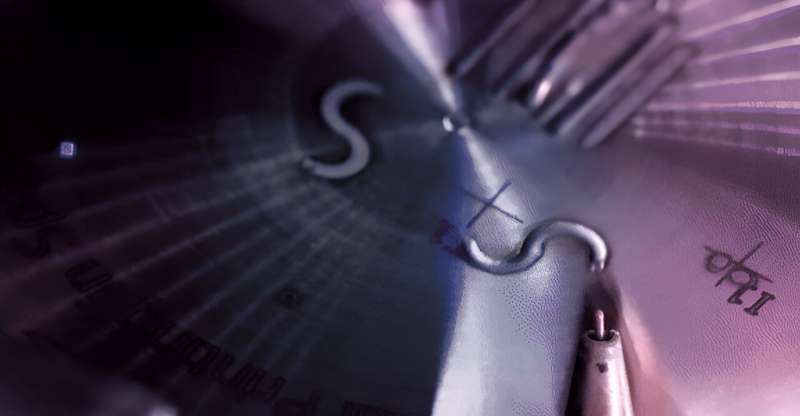This article has been reviewed according to Science X's editorial process and policies. Editors have highlighted the following attributes while ensuring the content's credibility:
fact-checked
trusted source
proofread
First metal 3D printing on International Space Station

One small s-curve deposited in liquefied stainless steel equals a giant leap forward for in-orbit manufacturing: This is the very first metal 3D printing aboard the International Space Station, which took place last Thursday, aboard ESA's Columbus laboratory module.
"This S-curve is a test line, successfully concluding the commissioning of our Metal 3D Printer," explains ESA technical officer Rob Postema.
"The success of this first print, along with other reference lines, leaves us ready to print full parts in the near future. We've reached this point thanks to the hard efforts of the industrial team led by Airbus Defense and Space SAS, the CADMOS User Support Center in France, from which print operations are overseen from the ground, as well as our own ESA team."
Sébastien Girault, part of the team at consortium leader Airbus adds, "We're very happy to have performed the very first metal 3D printing aboard the ISS—the quality is as good as we could dream."
The Metal 3D Printer technology demonstrator has been developed by an industrial team led by Airbus under contract to ESA's Directorate of Human and Robotic Exploration.
It reached the ISS back in January. ESA astronaut Andreas Mogensen then installed the approximately 180-kg payload in the European Draw Rack Mark II, part of ESA's Columbus module.
The Metal 3D Printer's design is based on stainless-steel wire being fed into the printing area, which is heated by a high-power laser, about a million times more powerful than a standard laser pointer. As the wire dips into the melt pool, the end of the wire melts so that metal is added to the print.
The print process is overseen entirely from the ground. All the onboard crew has to do is open a nitrogen and venting valve before the printing starts. For safety reasons the printer operates within a fully sealed box, preventing excess heat or fumes from escaping.
Four shapes have been chosen for subsequent full-scale 3D printing, which will later be returned to Earth to be compared with reference prints made on the ground in normal gravity.
ESA materials engineer Advenit Makaya from the ESA's Directorate of Technology, Engineering and Quality, has advised the project. "Two of these printed parts will be analyzed in the Materials and Electrical Components Laboratory at ESTEC in the Netherlands, to help us understand whether prolonged microgravity has an effect on the printing of metallic materials. The other two will go to the European Astronaut Center and the Technical University of Denmark, DTU," said Makaya.
One of ESA's goals for future development is to create a circular space economy and recycle materials in orbit to allow for a better use of resources, such as repurposing bits from old satellites into new tools or structures. An operational version of this metal 3D printer would eliminate the need to send a tool up with a rocket and allow the astronauts to print the needed parts in orbit.
Provided by European Space Agency





















